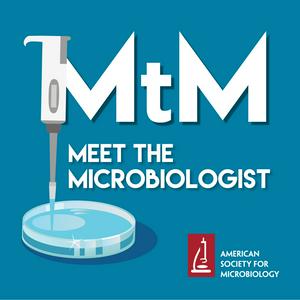Preventing Foodborne Pathogens With Plant-Derived Compounds with Karl Matthews
Karl Matthews, Ph.D., Professor of Microbial Food Safety at Rutgers University, discusses ways to eliminate pathogens like Salmonella, E. coli O157:H7 and Listeria from fresh fruits and vegetables. He highlights the importance of preventative measures from farm to table, including the use of water antimicrobials, like chlorine, and photosensitizers, like curcumin. Watch this episode: https://youtu.be/6Wkef9RyUVE Ashley's Biggest Takeaways We consume billions of microorganisms in the food that we eat each day. Fresh fruits and vegetables that are not thermally processed are likely to carry a higher microbial load than cooked foods. Many of those microbes are not concerning to human health. However, when pathogens of human health concern are present, the food can become unsafe to eat. Scientists use many methods from pre-harvest through post-harvest to keep food free of human pathogens. Water antimicrobials, such as chlorine, and photodynamic inactivation using photosensitizers, such as curcumin, are 2 preventative measures that Matthews and colleagues are investigating. Curcumin is a natural chemical compound found in the turmeric plant. It is responsible for giving tumeric its yellow color. Curcumin is also a photosensitizer, meaning that it can absorb light energy and transfer it to another molecule to initiate chemical reactions that produce cytotoxic singlet oxygen. Featured Quotes When I look at [what makes fruits and vegetables safe to eat] as far as from a microbiological perspective, it's are they free of pathogens of human health concern? And so, we might think about organisms, such as Salmonella or the Shiga toxin producing E coli or Listeria. There are a number of processes and initiatives that are put into place, from the pre-harvest through post-harvest levels to try to ensure that the product is not contaminated with microorganisms of human health concern. Each day, we're consuming literally billions of microorganisms in the foods that we eat, and particularly the raw fruits and vegetables that we're eating that are not being thermally processed in any fashion by which you might reduce the microbial load. Oftentimes we think about the bacteria that might well be there. But we do know that there's viruses that could be present. There's certain type of protozoa that might be present. Many of us know of norovirus and the concerns associated with that particular pathogen. So, there's a multitude of microorganisms that might well be associated with fresh fruits and vegetables, but there's really a very limited number or types that are actually of concern from a human health standpoint. In my program, we're working on E. coli O157:H7, in particular. It's a certain serotype of E. coli, a diarrheagenic E. coli, what's also known as a Shiga toxin-producing E. coli. We work with Salmonella, and we work with Listeria monocytogenes, but there's other microorganisms, such as Campylobacter, Yersinia, Staphylococcus aureus. All of those types of pathogens can also be associated with foods—and different types of foods, at that—and be of concern to the general public—the consumer. If we look at a lot of the processing of foods that are taking place, not only here in the United States, but globally, many times, what will happen is they're utilizing some type of a water antimicrobial, and I stress that because, oftentimes, these antimicrobials are added to the water to control the microbial load in the water. So, ultimately, you're not basically putting on water and putting on a whole load of microorganisms along with it. And also, you can prevent cross contamination through that. Here in the U.S. and elsewhere, we'll often put additional chlorine into the water. So, let's say we're increasing the chlorine concentration to 20 parts per million, or 50 parts per million, or maybe in poultry processing, they're utilizing peracetic acid. These are 2 common antimicrobials that are being used. What we wanted to do is find out could we utilize some other types of methods that might well control microorganisms on the commodity itself? And that's where we started looking at photodynamic inactivation and coupling that with the use of a photosensitizer. And in this particular case, the photosensitizer we were using was curcumin. The reason for working with curcumin is that it's naturally used in foods as a food dye. It's also used as a flavoring agent, and so forth. So, it's there, and it's being used—not just in the U.S., but [also] globally. And we thought we would try to see if we utilize this compound, could we have an additive effect to it? If you apply certain wavelengths of light, you can inactivate microorganisms, but if you apply that wavelength to something like a photosensitizer type molecule (curcumin), you could generate singlet oxygen molecules. And those singlet oxygen molecules would act like little explosions on the cell membrane and basically blow it apart and, therefore, inactivate the organism. We looked at the ability of this to inactivate Listeria monocytogenes, Salmonella, as well as E. coli O157:H7, so these Shiga toxin-producing E. coli, and what we did indeed find is that it was very effective. We looked at it in comparison to peracetic acid use in the poultry industry, and we found it to be equivalent, at least to treatments that we were utilizing on poultry skin, with inactivation of the microorganisms, such as Listeria, on the poultry skin. So, it is really exciting. Links for This Episode Preventing Foodborne Outbreaks Starts in the Field. Influences of photosensitizer curcumin on microbial survival and physicochemical properties of chicken during storage.


